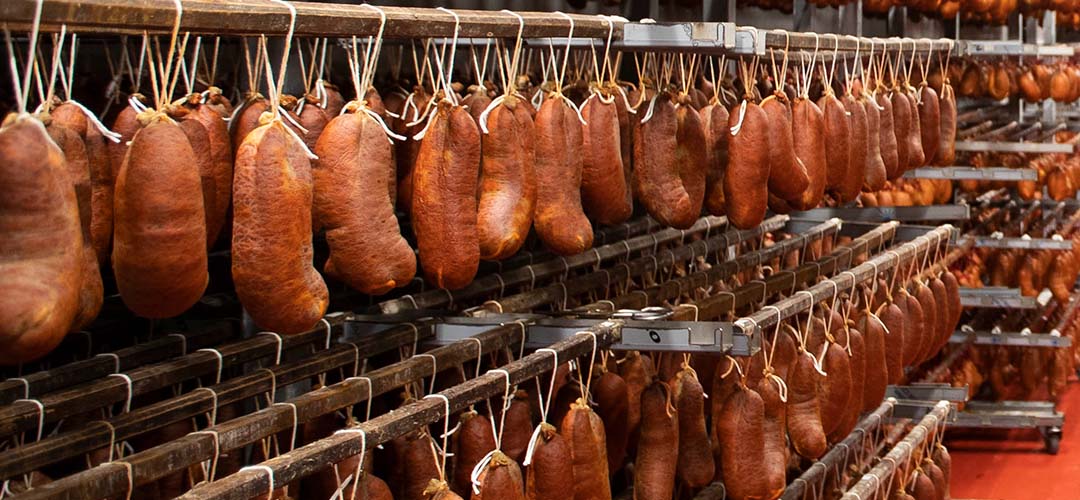SOBRASSADA DE MALLORCA IGP | ELABORACIÓN

COMPOSICIÓN Y ELABORACIÓN
La Sobrassada de Mallorca se elabora a partir de carne de cerdo bien picada, mezclada con sal, con un toque de pimienta y el característico pimentón. Este último es el que la dota de su color rojo y sobre todo de su particular aroma y sabor. Es habitual también el uso de especias autorizadas en proporciones variables, según la fórmula personal y queda prohibido el uso de colorantes. La mezcla se embute y se deja curar durante unas cuantas semanas o incluso meses, con la finalidad de que se produzca una lenta transformación de la masa, que va perdiendo parte de la humedad inicial. Es en esta fase en la que la sobrasada adquiere su textura, el gusto, el aroma y el aspecto que le dan su reputación y la hacen tan distintiva e incomparable.


